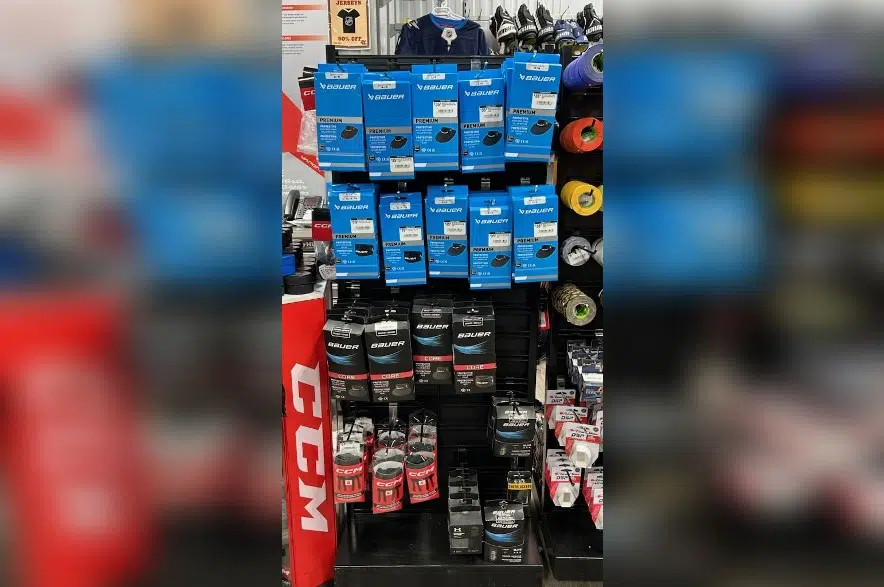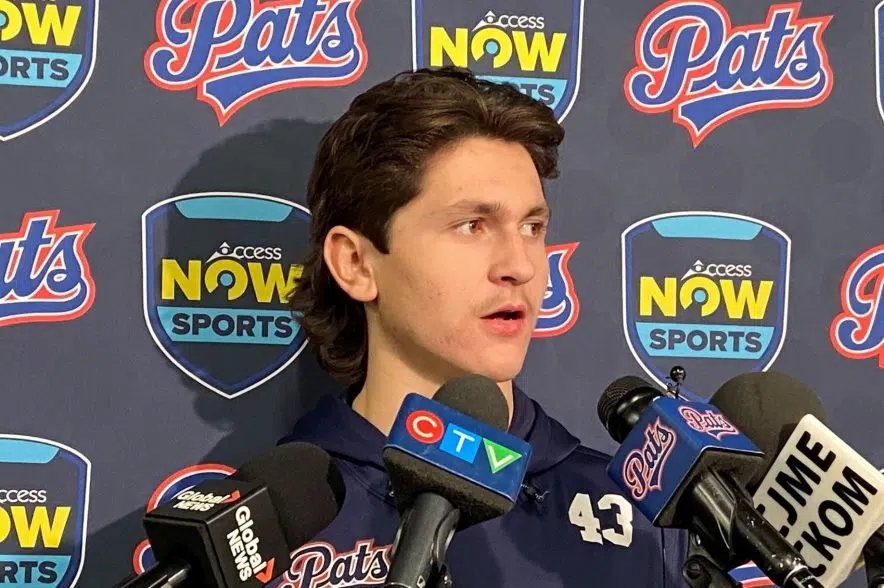Many players entering or playing in the WHL are eager to get a little bit more freedom than they do playing minor hockey.
By getting into the WHL, players have the option to wear neck guards and cages, but a vast majority of them decide to part ways with both of those items.
That changes starting Friday, when players will have to strap neck guards on for all games and practices moving forward. The league mandated their use Wednesday.
The WHL’s decision stems from the recent death of Adam Johnson, a former NHLer playing in England who was killed in a game last weekend after a skate blade sliced his neck.
Saskatoon Blades general manager Colin Preistner was supportive of the move, echoing what a lot of WHL teams said throughout the day on Thursday.
“Good on (the WHL),” Preistner said Thursday. “I think it was something that shouldn’t be laboured too much. Certainly there is some challenges with the equipment shortages. I think neck guard sales are flying off the shelves right now and it’s hard to argue with some people.
“It’s going to take a little while to get some supply because CCM and Bauer are out of them,” he added.
Preistner noted his team is working on getting the protective items, but it hasn’t been able to secure enough for Friday night.
“We’ve been calling around,” he said. “We usually use the different channel than the other customer would because we have a deal with Bauer and CCM.
“The problem is there’s three different types of (neck guards). Some of them are the sleeves that extend on your Dri Fit shirt, but those are the ones hard to find. Guys are going to have to test them out and see what they feel comfortable using.”
As part of the new rule, the league is giving teams time to get neck guards as the supply chain has dried up.
Donnie Uhren, the general manager of Extreme Hockey and Sport in Regina, said his store has had more calls regarding neck protection since the incident happened last weekend.
“We’ve always had inquiries on protective neck guards. Unfortunately, due to the circumstances, we have had more inquiries about protection and the neck guard area,” Uhren said. “They aren’t flying off the shelves, but we have stock with Bauer and CCM in supply right now.”
Uhren noted that if the neck guard supply chain has slowed, it’s because hockey stores typically get one shipment a year when hockey season ramps up.
“We usually have a shipment per year prior to our peak time in hockey season. We do see around this time a rise and influx in protective sales from base layers to kevlar socks to neck guards,” he added.
Preistner didn’t have time to talk to his players about the announcement. They found out the news on Wednesday night and didn’t skate on Thursday as they got set to travel to Prince Albert for a game.
While he didn’t get his players’ thoughts, he doesn’t expect any pushback from them.
“It’s going to be awkward for some players. They are not used to wearing them and (some) probably will find them to be uncomfortable, but that was the case with seatbelts in the ’60s and ’70s,” he explained. “It’s just something they’re going to have to get used to. Hopefully we can get the supply and players using them as soon as possible.”
Regina Pats captain Tanner Howe told the media Thursday that he thought the move by the league was a good idea.
“I think it’s good that we’re getting this rule,” Howe said. “You never want that to happen or see it happen to anyone, so I think it’s good that we’ve got it.”
Howe noted he hasn’t worn a neck guard since he played minor hockey.
Patrick Berge, one of the Pats’ 20-year-old players, also hasn’t worn a neck guard since minor hockey. Even so, he doesn’t think it’ll be that big of an adjustment.
“I don’t think (it makes) much of a difference. I think once you’re playing, you kind of forget about it,” Berge said. “It’s just mainly throwing it on and I don’t think it’s very restricting or anything. It’s just kind of there.”
When asked why he didn’t wear one before, Berge said a neck guard wasn’t common in the league.
“It was just something that nobody did,” he explained. “Nobody really thought about it or really cared. You just kind of got in (the league) and it just happened to come off and you never thought about it after.”
Preistner also explained that neck guards weren’t really something that was debated before the Johnson incident.
“To be totally honest, we usually try to be on the forefront of all things kind of progressive with this team,” he said. “I don’t recall having any discussions about neck guards in the last six months or year. The odd time we’ll mention it when the Memorial Cup or world juniors (are on) — you see the players wearing them — but it’s not something we’ve spoken of.”
Players in the Ontario Hockey League and Quebec Major Junior Hockey League are required to wear neck guards.
Preistner added his team is already wearing cutproof socks and wrist protection to avoid any other freak accidents or major injuries.
— With files from 980 CJME’s Nicole Garn













